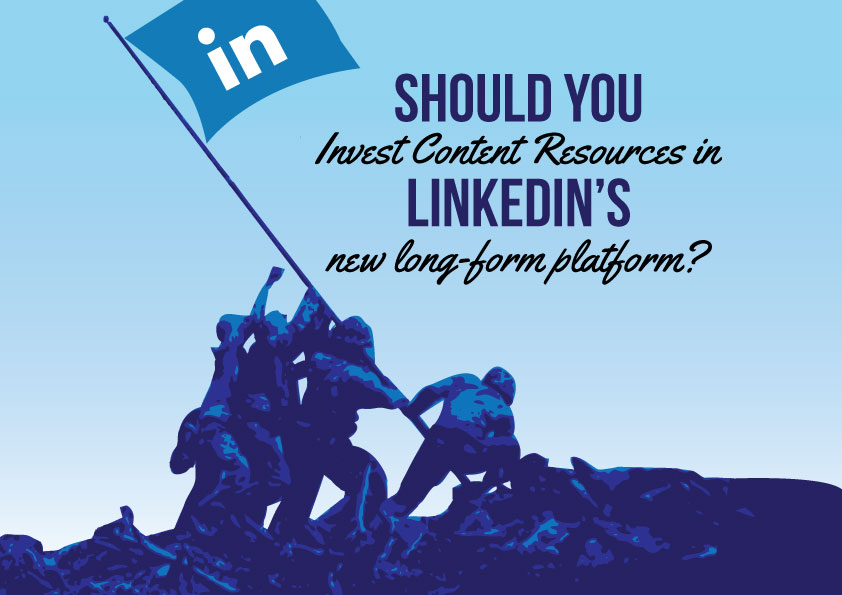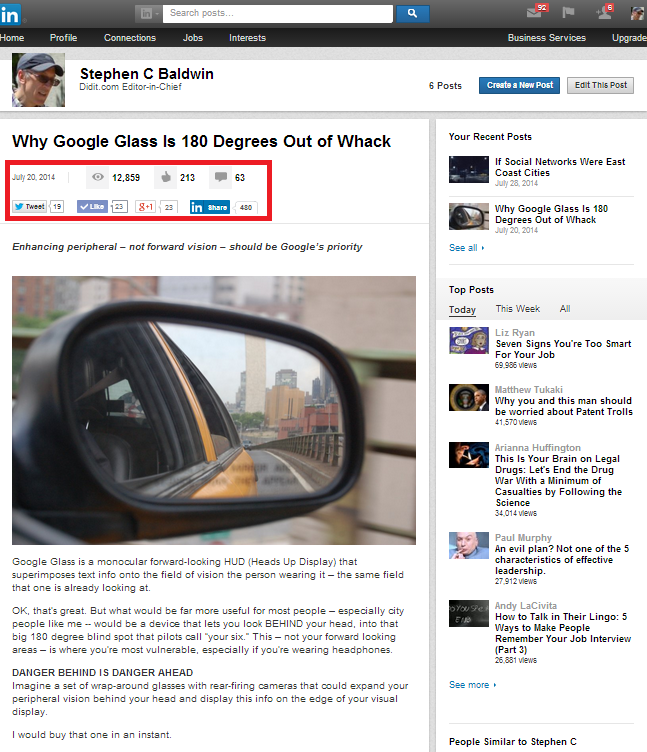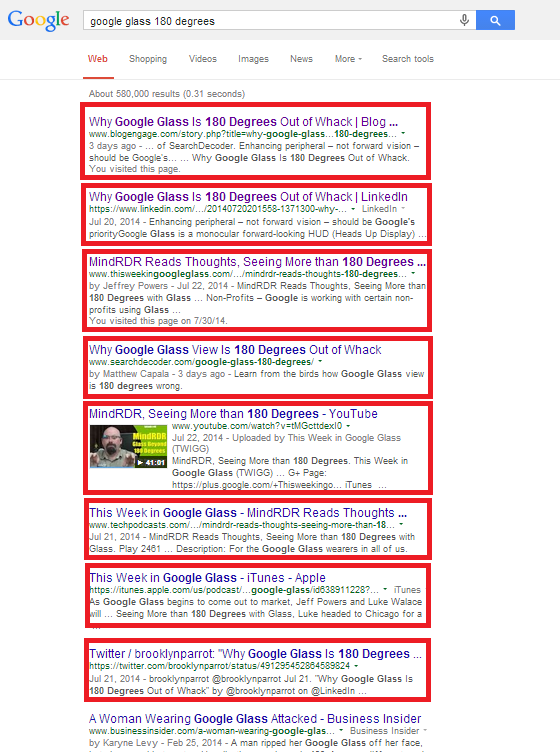We took LinkedIn’s new Publishing Platform for a test drive — here’s why you should too.

July 30, 2014: LinkedIn’s Publishing Platform — once limited to business celebrities such as Richard Branson and other official “LinkedIn Influencers” — has recently been opened up to its wider member base.
Naturally, we were interested in evaluating this platform, because as a B2B firm we’re always interested in new and better ways to reach qualified prospects on LinkedIn and in other business-focused environments. We also wanted to discover whether articles posted to LinkedIn would be as visible to search engines as they are when they’re published to a conventional WordPress site. We also wanted to study how LinkedIn’s content ranking algorithm works, and whether LinkedIn’s internal promotional features were actually effective at surfacing and delivering high-quality content to targeted audiences.
So in the past two weeks, we ran some tests; here are some of our early findings:
LinkedIn’s Publishing Platform Can Definitely Move the Needle
The results were astonishing. By the end of the weekend, the article had gotten more than 12,000 views, 408 LinkedIn InShares, 213 “thumbs up,” 63 comments, 19 Tweets, and 23 Facebook (see Figure 1). Not bad for a weekend post!
It should be noted that none of the writer’s other posts have done as well as the Google Glass article, probably because they weren’t as well targeted. Google Glass is a topic that’s well-known, and everybody seems to want to weigh in on it. Still, the other posts have done much better than similar articles posted to the writer’s own Blog.

Figure 1 (Social results metrics for experimental post on LinkedIn’s new Publisher Platform)
SEO Impact
Because people have wondered whether content posted via the LinkedIn Publisher Platform would be as fully visible to search engines as blog-based content is, it was important to examine the articles’ search visibility several days after its posting.
While there was never any intention in this test to get the article ranked for “Google Glass” (a keyword phrase that’s highly competitive, given the fact that there are hundreds of articles on the topic, many from top-tier, high Page Rank site, including Google), it was clear that the article had been spidered and indexed, and so had the sites that had linked to it.

Figure 2 (SERP performance of article published to LinkedIn Publishing Platform one week after publication)
Of course, there’s a trade off here. Any Page Rank earned by a publisher due to a popular article will be credited to LinkedIn, not the publisher’s site. You’re trading immediate SEO power — the ability to get all that link juice for yourself — for the social power supplied by LinkedIn and the secondary SEO benefits of getting the article quickly indexed and linked to by 3rd parties.
The quick indexing of the test article also addresses a big concern about the Publishing Platform when it was first announced; the idea that publishing on LinkedIn would confine the influence of the content within a “walled garden,” consequently reducing the reach of any post to LinkedIn’s member base. This is obviously not the case here; LinkedIn articles appear to be as search-accessible as those published to conventional blogs.
Tips For Using LinkedIn’s Publishing Platform
If you regularly post content to a Blog, you’ll find LinkedIn’s Publishing Platform very easy to use. To get started with a post, simply go to your Home area (Figure 2) and roll your mouse over the “pencil” icon. You’ll see a “Create a Post” message appear just above it. Click on this link.

Figure 3 (Getting started on LinkedIn’s Publishing Platform)
You’ll then be taken to a composition window (Figure 4) where you can compose your text or paste text from a word processor. LinkedIn’s publishing controls are intuitive and very word processor-like. You have the usual text formatting controls, can easily hyperlink any section of highlighted text, and also embed media (via Iframe, which is useful for embedding slideshare presentations).
Figure 4 (Article formatting tools on LinkedIn’s Publishing Platform)
You can also easily include photos in your post, a recommended practice for any posts you intend to become popular on social media channels. Be aware, however, that LinkedIn, unlike a typical Blog CMS, will not allow you to link to photos residing on other sites; you must instead upload them directly to LinkedIn. This is presumably part of a content QA routine performed to protect LinkedIn against copyright infringement claims from 3rd parties. When you upload a photo to LinkedIn, you are making a copy of it — not just linking to it, an important distinction when it comes to using resources on Wiki Commons and other image sources. So make sure that you have full rights — not just to link but to actually download/upload/copy an image — before uploading it to LinkedIn. If anything you publish in words or images belongs to anybody else, and LinkedIn concludes you haven’t properly secured the creator’s rights, the penalty can be very severe — your account may be disabled. For our test article, we made sure to obtain full rights to the two images before using them — and so should you.
Our Take: It’s Worth It
LinkedIn’s Publishing Platform provides authors and content creators an attractive, easy to use way to get their business-focused posts in front of an audience likely to resonate and respond to them. We highly recommend that you start evaluating it because we expect that LinkedIn may soon add more features to the Publishing Platform in response to early feedback, including giving members the ability to “tag” articles they find interesting.
And please let us know about any experiences — both good and bad — you’ve had. It’s always fascinating to be “on the ground floor” of a new publishing channel.
Have a question about Content Marketing, Social Media, or SEO? Contact us.
- 10 Mistakes to Avoid When Using QR Codes for Marketing - September 20, 2023
- Kevin Lee on How AI Changes the SEO Landscape - August 31, 2023
- The Power of Compound Marketing: Kevin Lee Presents @ 1MediaWorld 2023 Global Conference - March 7, 2023

